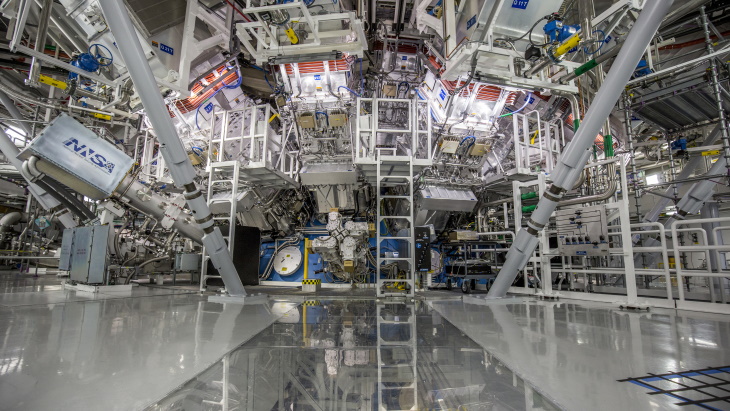LLNL researchers achieve fusion ignition for second time
Researchers at the National Ignition Facility (NIF) at the Lawrence Livermore National Laboratory (LLNL) in California have reportedly achieved net energy gain in a fusion reaction for the second time. The milestone was first achieved last December.

The target chamber at NIF (Image: LLNL)
Nuclear fusion is the process by which two light nuclei combine to form a single heavier nucleus, releasing a large amount of energy. LLNL has been pursuing the use of lasers to induce fusion in a laboratory setting since the 1960s, building a series of increasingly powerful laser systems at the lab and leading to the creation of NIF, described as the world's largest and most energetic laser system. The facility uses powerful laser beams to create temperatures and pressures similar to those found in the cores of stars and giant planets - and inside nuclear explosions.
The 5 December experiment used 192 laser beams to deliver more than 2 million joules (MJ) of ultraviolet energy to a deuterium-tritium fuel pellet to create so-called fusion ignition - also referred to as scientific energy breakeven. In achieving an output of 3.15 MJ of fusion energy from the delivery of 2.05 MJ to the fuel target, the experiment demonstrated the fundamental science basis for inertial confinement fusion energy - or IFE - for the first time.
"This is a landmark achievement for the researchers and staff at the National Ignition Facility who have dedicated their careers to seeing fusion ignition become a reality, and this milestone will undoubtedly spark even more discovery," US Secretary of Energy Jennifer Granholm said following the achievement.
INL scientists have now achieved net energy gain in a fusion reaction for the second time, the Financial Times reported.
"Since demonstrating fusion ignition for the first time at the National Ignition Facility in December 2022, we have continued to perform experiments to study this exciting new scientific regime," INL was quoted as saying. "In an experiment conducted on 30 July we repeated ignition at NIF."
It added: "As is our standard practice, we plan on reporting those results at upcoming scientific conferences and in peer-reviewed publications."
Initial data from the July experiment indicated an energy output greater than 3.5 MJ, the Financial Times said. However, it added: "Energy gain in this context only compares the energy generated to the energy in the lasers, not to the total amount of energy pulled off the grid to power the system, which is much higher. Scientists estimate that commercial fusion will require reactions that generate between 30 and 100 times the energy in the lasers."
Inertial confinement is one of two main experimental approaches to nuclear fusion that are currently being studied. Magnetic confinement fusion uses strong magnetic fields to contain the hot plasma in a containment such as a tokamak.
Researched and written by World Nuclear News
- China Institute of Atomic Energy
- Nuclear Power Institute of China
- Southwestern Institute of Physics
- China Nuclear Power Operation Technology Corporation, Ltd.
- China Nuclear Power Engineering Co., Ltd.
- China Institute for Radiation Protection
- Beijing Research Institute of Uranium Geology (BRIUG)
- China Institute of Nuclear Industry Strategy (CINIS)
- China Nuclear Mining Science and Technology Corporation


